News
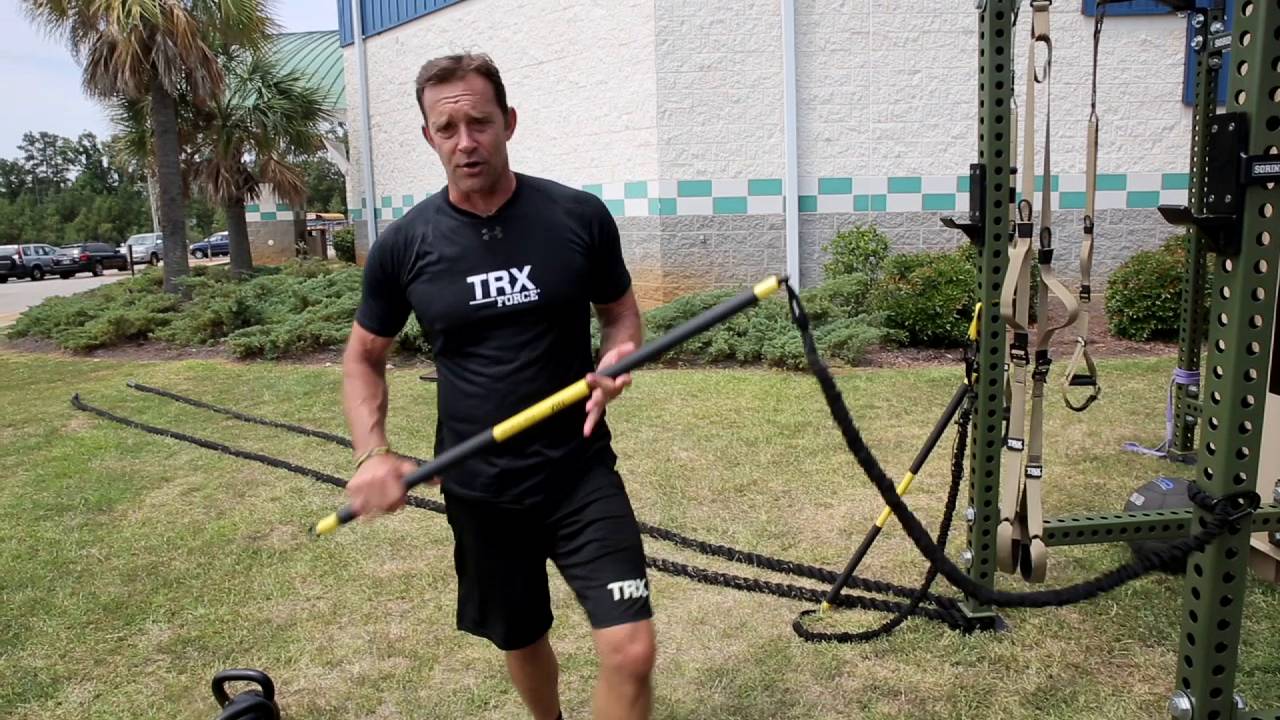
The TRX Tactical Training Locker
The TRX Tactical Training Locker
TRX's most comprehensive deployable training solution, the TRX Tactical Training Locker, delivers fully-integrated gear, programming and education, anywhere. Want to find the right tactical training program for your unit? Take our quick assessment quiz to get a customized plan tailored to military and first responder needs. Using cutting-edge training methodologies programmed on the highest quality, field-tested gear, the Locker provides a complete training solution for all branches of the military and first responders.
TAKE OUR TRAINING QUIZ
The Locker is an 8-foot Tricon ISO container that transforms into a fully-functional, multi-modality training center in less than 45 minutes. When not in use, the Locker securely stores all of your training equipment and can be modified to also include an LSA™ (Land, Sea, Air) Adapter device so it can be deployed on military aircraft with 108” 463L cargo systems. The Locker comes with three independent functional-training racks to facilitate each of the Lift / Move / Recover stations in our tactical training program.
For more information on the TRX Tactical Training Locker, or how to purchase, click here.
For more information on TRX Tactical Training, click here.
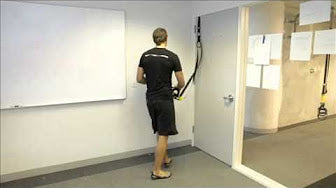
The Ultimate TRX Playlist
You know what they say: If something is easy, then everybody would do it. For no daily, or weekly, ritual does this adage hold more weight than working out. And nobody understands this better than those responsible for motivating their clients to do just that.
Whether you’re a personal trainer, group class instructor, Bootcamp leader or anyone in between, the motivational power of a great workout playlist simply cannot be denied. Strike the right chord in your studio and the positive response is immediate: Clients’ heads start bobbing, bodies hopping, fists clenching…it’s go time.
Understanding that musical tastes vary, especially amidst a mixed gender audience, and that the right playlist can elevate going-through-the-motions to powering-through-the-movements. Want to find the perfect workout soundtrack for your training style? Take our quick assessment quiz to get personalized playlist recommendations. We polled the entire TRX office and culled our favorites from a list of hundreds into The Ultimate TRX Playlist.
TAKE OUR TRAINING QUIZ
Just push play, and watch the excuses melt away.
Can’t Stop - Red Hot Chili Peppers
Stronger - Kanye West
Seventeen Years - Ratatat
Quiet Dog - Mos Def
Fader - Temper Trap
Empire State of Mind – Alicia Keys & Jay-Z
Right Round - Flo Rida
Dreams - Van Halen
Just Dance - Lady Gaga
Feel Good Inc - Gorillaz
Lyrics to Go - A Tribe Called Quest
Delirious – Prince
Numb/Encore - Jay-Z & Linkin Park
You Wreck Me - Tom Petty
Concrete Schoolyard - Jurassic Five
Download these tunes, and hopefully, when confronted with the choice of hitting snooze or the couch, or grunting through a fierce sweat session, this will be just the motivation you and/or your clients need to choose the latter.
What’s your ultimate playlist? Share it here. We promise, no judgments.
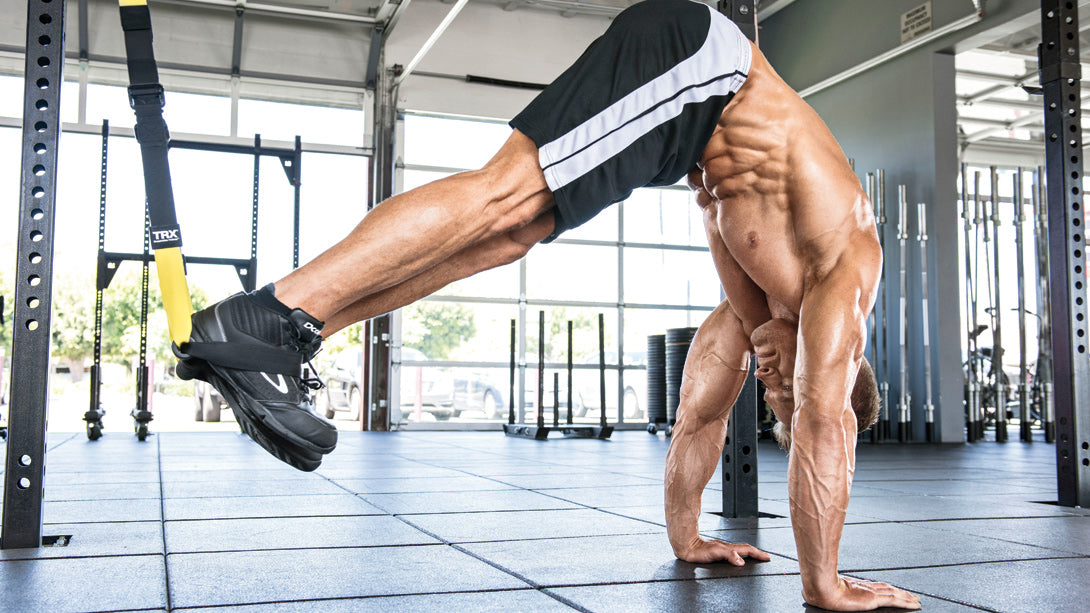
The TRX Muscle & Fitness Workout
The TRX Suspension Trainer can be used to ignite your pursuit of size, power and functional strength. We developed this free training program for Muscle and Fitness Magazine to showcase how you can build muscle and develop total-body strength using the TRX Suspension Trainer as your primary tool.
When you train with the Suspension Trainer, every movement is a core movement and you develop real strength that will help you perform better in any activity, sport or other training that you do.
It can be used in conjunction with your current training program to complement traditional movements like the bench press, deadlift, squat and other lifting you’re currently doing with barbells, kettlebells, dumbbells or other strength implements.
Perfect for anyone who wants to keep their training consistent on the go, the TRX Suspension Trainer weighs less than two pounds and can be set up indoors or outdoors anywhere you can find a sturdy overhead anchor point in a matter of seconds.
Get the all three workout videos and our PDF guide when you create a FREE My Locker Account, here.
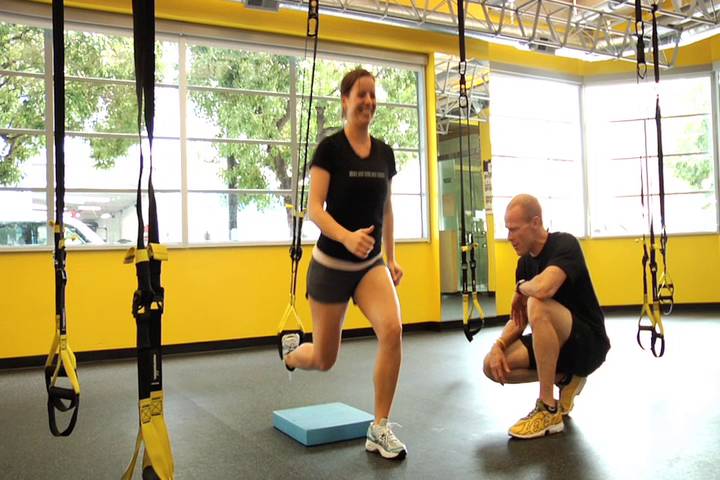
The TRX Lower Body Workout
Watch the TRX Lower Body Challenge. Work out your lower back, abs, glutes, hips, quads, hamstrings, calves with this dynamic challenge involving the TRX Lunge and the TRX Hip Press.
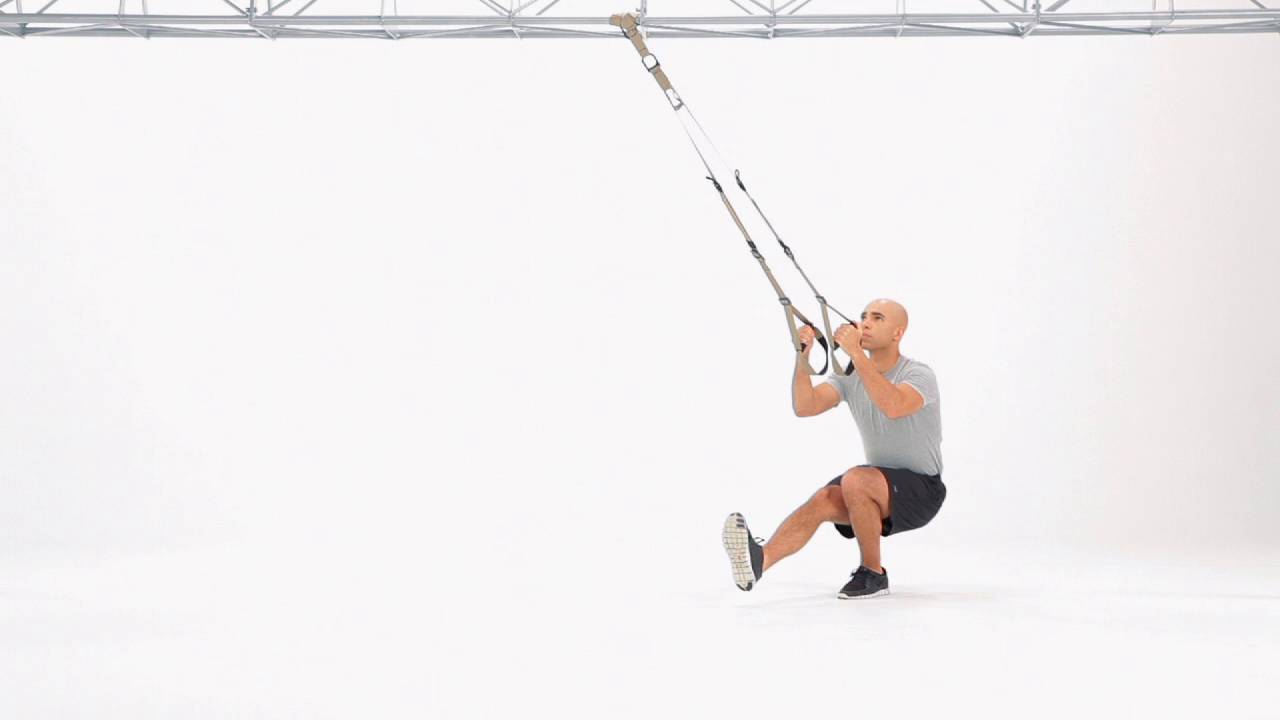
The TRX Crossing Balance Lunge
The TRX Crossing Balance Lunge is an excellent exercise to build single-leg strength and core stability for soccer, MMA or any other activity with unilateral lower body movement. Want to find the perfect TRX exercises for your sport? Take our quick assessment quiz to get a personalized training plan. To perform the TRX Crossing Balance Lunge, adjust your TRX Suspension Trainer to Mid-Length, grasp the handles and stand facing the anchor point.
TAKE OUR TRAINING QUIZ
Plant one foot firmly on the ground and raise your opposing leg until your knee is parallel with your hip
Lower yourself down and cross the knee of your non-working leg behind the knee of your working leg
To stand back up, extend your hips forward while keeping the shin of your working leg vertical
As you perform this exercise, keep your bodyweight equally distributed between your arms and planted leg. Brace your core and keep your eyes on the anchor point throughout the entire movement to help you stay balanced.
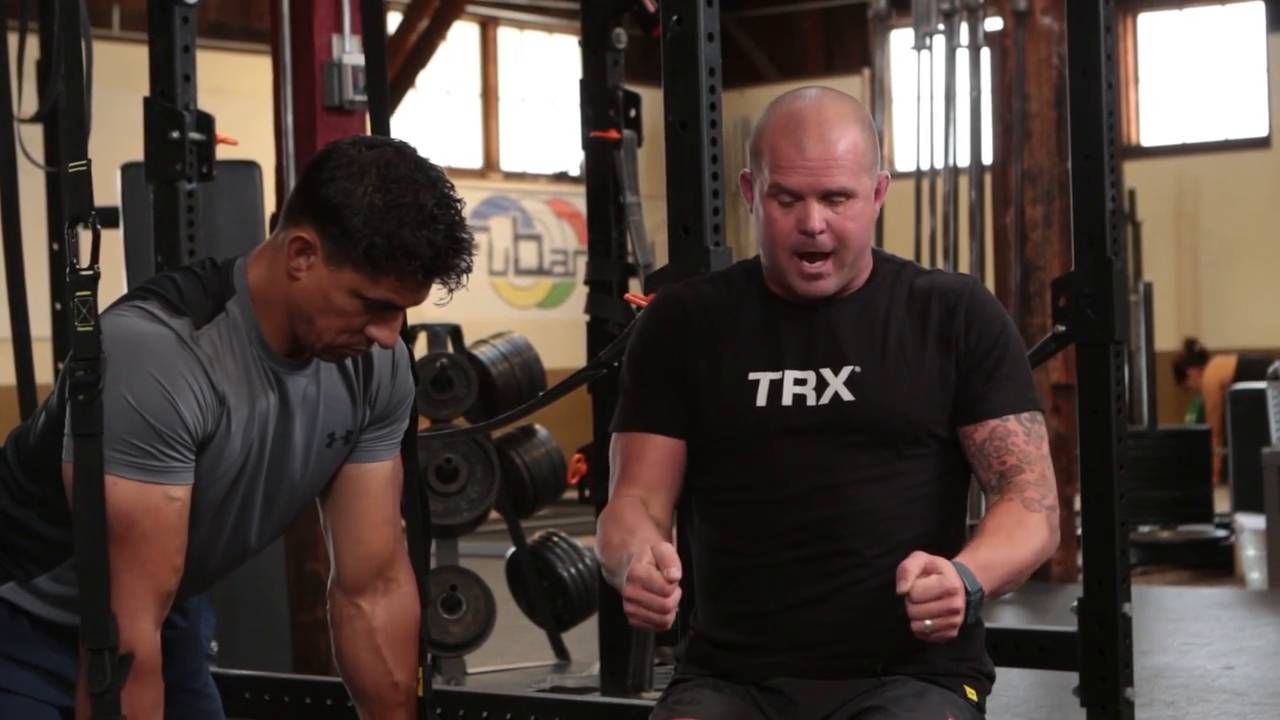
The TRX Duo Trainer ™ and TRX Suspension Trainer ™ Take Bodyweight Training to New Levels
By Chris Frankel, TRX, Head of Human Performance
Let's start out with the end of the story – the new TRX Duo Trainer was developed to round out the TRX Suspension Trainer so anyone, anywhere could get a tremendous bodyweight workout. Yes, gymnastic rings have been around since the early 19th century and other equipment with two anchor points is available. We waited to bring our dual-anchor trainer to ensure it met our standards for equipment that can wear the TRX badge. We needed a compelling reason -- and product innovation -- to add to the TRX product line... the new TRX Duo Trainer is both. Not sure which TRX equipment is right for your fitness level and goals? Take our quick fitness assessment quiz to get personalized recommendations tailored to your needs and receive custom workout solutions that will help you make the most of your TRX gear.
TAKE OUR TRAINING QUIZ
It all started with a relationship and identifying opportunities.
I met Kelly Starrett, DPT several years back when we were presenting at a conference. At the time I was living in Palo Alto and working for TRX in San Francisco. The Frankel family eventually moved north to San Rafael, CA. One of our first days in the new town, I was dropping a couple of my kids off at their new school and I ran into Kelly dropping off his children. We struck up a conversation, which led to a solid friendship.
During a visit to Kelly’s gym, San Francisco Crossfit, he mentioned that the Suspension Trainer constrains certain moves in his “archetype position” approach. Fast forward a few months and several iterations with TRX product development, we had a solve for several constraints on bodyweight training. Never satisfied resting on laurels, TRX prides itself on always trying to push towards better. Kelly Starrett and his coaches were instrumental in developing best practices. It is not often easy to find such authentically passionate professionals willing to collaborate. But we sure did find a great partner in Kelly and MWOD.
What’s old is new again and sometimes it was right at the start.
Around 1842, Adolf Spiess introduced an early version of what would become the gymnastic rings of today. “ Ringeschwebel,” roughly translating to “ring swivel,” was an apparatus used for gymnastic exercise, including swinging motions and hanging positions (schwebe also translates to hover). Spiess’ version would become “flying rings” and were replaced in the 1960s with the round rings we see today. The design of ringeschwebel included “metal stirrups” for handles. The stirrup design may have been simply borrowed from stirrup irons used for riding horses.
The straight handle design of ringeschwebel -- updated for the TRX Duo Trainer --solves for several common issues experienced using the round ring design. The round handle is not an ergonomically-friendly shape for many people. It is even worse for people with hand or wrist injuries/limitations when the use of a false grip may not be possible on the round handle. In addition, for most people the round handle-hand interface becomes the weak link or limiting factor in the system. If your grip gives out or the more focused pressure points on your hands with rings limits the amount of force or duration of exercise you can handle (see what I did there?) you are not getting the full benefit of the exercise. Going back to the straight handle makes gymnastic-type exercises more effective and more accessible for more people.
A little innovation goes a long way.
On its own a straight handle is not new, but we did our homework on the diameter and length. For the product to meet TRX standards, it had to bring more to the table than a handle improvement. In fitness and S&C settings where gymnastic rings are used, another common problem is adjusting the length/height for different people and for different exercises.... enter the “Infinity” strap design.
Founder and CEO of TRX, Randy Hetrick along with Mauricio Delgado, TRX Director of Product, huddled-up and came out with an elegant adjustment and anchoring solution. The Infinity Anchors and Mobile Grips on the Duo Trainer enable quick and accurate adjustments for Rock Bottom Chest Presses, Dips, and Pull-ups for people of all sizes. This design also lets you take your Duo Trainer outside to anchor to a tree, at the gym on a pull-up bar, squat rack or on the cross bar of a cable crossover machine.
But will my Suspension Trainer get jealous?
For over 10 years TRX has built its reputation on the Suspension Trainer.. There are numerous peer-reviewed studies on the effectiveness of the single anchor-point, limited slip design. The TRX Suspension Trainer provides a perfect mix of instability from the top down to create a proprioceptively rich environment with enough stability to drive high levels of force needed to build strength and power. The Suspension Trainer is a perfect tool for core work (peer reviewed evidence supporting this advantage), unilateral work (one arm or leg at a time) for balanced fitness development, pulling exercises (integrating the entire posterior chain) and even mobility work.
The TRX Duo Trainer’s two anchor-point design provides more stability from the top down, allowing traditional strength and conditioning exercises like horizontal pressing (chest press), vertical pressing (dips) and vertical pulling (pull-ups). The TRX Training Philosophy approaches movement-based training by identifying key Foundational Movements including push, pull, rotate, hinge, squat, lunge and step. While the Suspension Trainer holds down the title as “best pulling” piece of gear, the Duo Trainer is fast becoming the “best pushing” piece of gear and expands the bodyweight opportunities for pulling by making hanging, swinging and pull-ups more accessible to everyone.
Far from sibling rivalry, the TRX Duo Trainer and TRX Suspension Trainer coexist. Our pair of Trainers take bodyweight training to levels not easily accessible before by leveraging the TRX Movement Based Training methodology. This is a case of 1 + 1 = 5, where the sum of these two is much greater than their component parts.
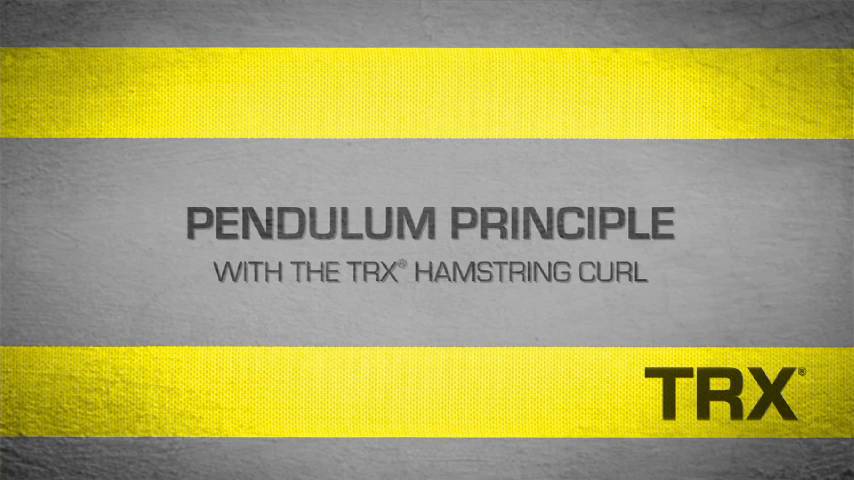
The Three Principles of Progression, Ask the Trainer
Learn the in's and out's of progressing and scaling your TRX Suspension Trainer workouts with the TRX Principles of Progression. In the course of your research on TRX Training, you may have seen or read something about “the virtually unlimited scalability of TRX Suspension Training bodyweight exercises.” And unless you just took your TRX Suspension Training Course last week, you may be wondering, “What does this actually mean, and how do I use it in my training?”
In essence, it means that almost anyone can use the TRX Suspension Trainer, regardless of his or her level of fitness. The principles governing Suspension Training are simple, easy to adjust and vary greatly, depending on your body position.
In the video, TRX Senior Instructor Arthur Hsu demonstrates the three principles of progression you can use to modify the intensity of your workouts and those of your clients. Want to find the right exercise progressions for your fitness level? Take our quick assessment quiz to get a personalized plan that applies these key principles.
TAKE OUR TRAINING QUIZ
They are:
Vector Resistance PrincipleExercise Shown: TRX Low RowThe Vector Resistance Principle refers to your bodyweight versus your body angle.so The higher your body position from the ground, the easier the exercise. The lower your body position to the ground, the more difficult.
Stability PrincipleExercise Shown: TRX Chest PressThe more points of contact your body has with the ground (one foot or two feet) and the farther apart your stance, the easier an exercise will be.
Pendulum PrincipleExercise Shown: TRX Hamstring CurlThink of the ground directly under the anchor point as neutral. The farther away from neutral (toward you) you are, the harder an exercise will be. The farther past neutral you are, the easier an exercise will be.
Apply these three principles to your TRX workouts. You can perform the same workout repeatedly for months at a time and make it progressively more challenging. Or, if you find an exercise to be too difficult, use these principles to make the movement easier.
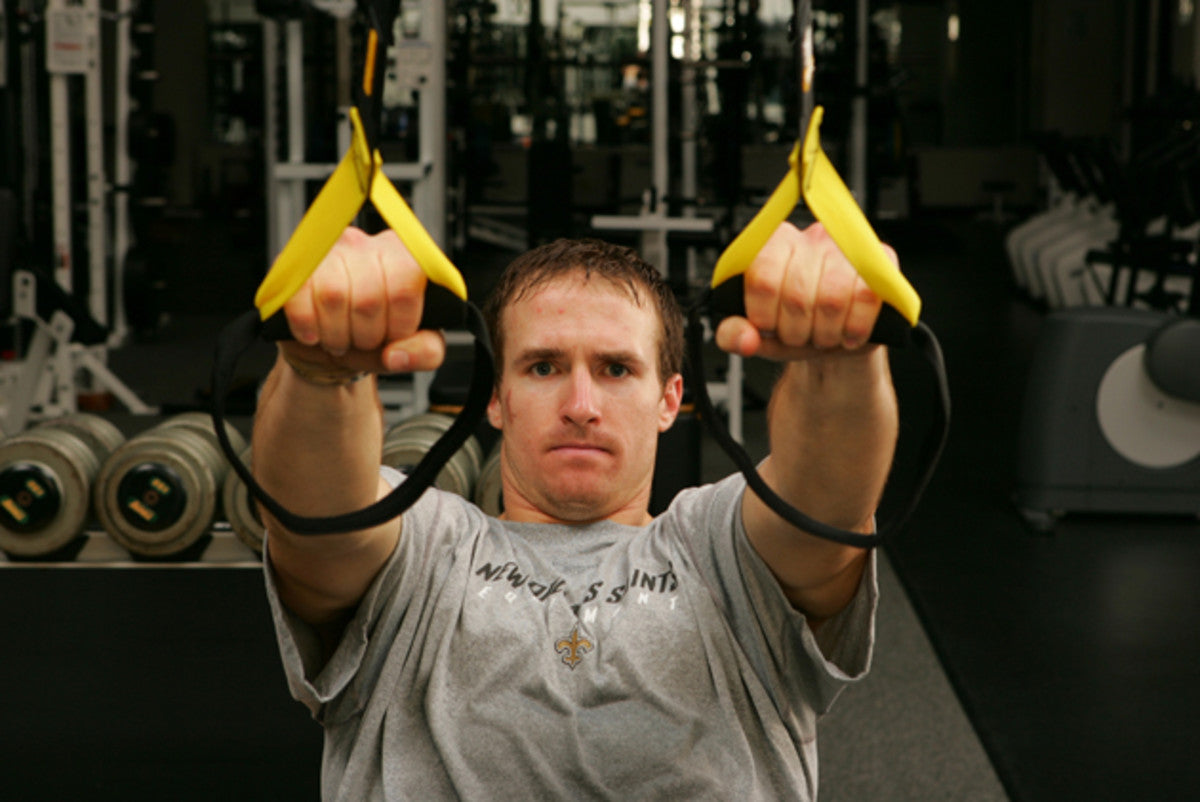
The Randy Hetrick and Drew Brees TRX Workout
Check out this intense Guns and Gut Gauntlet from Men's Health, featuring Todd Durkin, Drew Brees and TRX CEO Randy Hetrick. Before taking on their time, try our quick fitness assessment quiz to get a personalized workout plan that'll help you crush challenges like this. Can you beat their time?
TAKE OUR TRAINING QUIZ
For the past seven months, Todd Durkin, C.S.C.S., author of The IMPACT! Body Plan, has challenged you to a fitness test every weekend. But this time, he also challenged Pro Bowl quarterback Drew Brees and former Navy Seal Randy Hetrick to try this fearsome four-move circuit that combines grueling upper-body strength moves with lung-busting cardio."It smoked me," said Hetrick, dripping with sweat after he finished the challenge. That's because the circuit includes exercises performed with a TRX training system. Created by Hetrick himself while on the road during one deployment, TRX uses suspension body-weight moves to boost your biceps, blast your triceps, and pump up your entire upper body. Plus, the instability of the TRX forces your core to work harder, increasing the difficulty of the exercises.If that doesn't sound hard enough, Durkin also added single-arm kettlebell swings and a sprint to the mix to test your cardiovascular fitness and torch your gut.Here's how to do it: Grab a stopwatch and time yourself completing the following four exercises in a row.Single-Arm Kettlebell SwingGrab a kettlebell with one hand and assume a shortstop position (quarter squat, hips pushed back, spine in alignment), letting the bell hang in front of you. Swing it between your legs and behind your hips. Now stand and swing it up to eye level while extending your hips and contracting your glutes. Drop back to the starting position; let gravity bring the kettlebell back between your legs. Complete 15 reps with one arm, and then hold the weight with your other hand for 15 reps.TRX Atomic PushupAttach TRX suspension training straps to a secure object. Then place your feet in the straps and assume a pushup position with your hands just wider than shoulder-width apart. Your body should form a straight line from your ankles to your head. Now do a pushup, by bending your elbows and lower your body until your chest nearly touches the floor. Press back up, and without rounding your lower back, pull your knees toward your chest. Reverse the movement back to the starting position. That’s one rep. Do 20.TRX Arm SplitsSecure the TRX to a secure object so the handles hang at waist height when standing. Face the TRX and hold the handles with palms facing down. With your feet hip-width apart, lean back until your arms are fully extended. This is the starting position. Next, pull your body forward toward the anchor point by simultaneously bringing your right arm above your right shoulder and your left hand down by your left leg. Then return to the starting position. That's 1 rep. Do 10 total.30-Second RunHop on a treadmill and run for 30 seconds. Hetrick and Brees ran at a speed of 8.5 mph.Can you keep up with the Pro Bowl quarterback and former Navy Seal? Watch the video above to see Drew Brees and Randy Hetrick complete this weekend's challenge. Brees completed the circuit in 5 minutes and 15 seconds, while Hetrick performed the moves in 5 minutes and 58 seconds.
Want more from Durkin? Get the TRX Performance: Train Like the Pros workout.
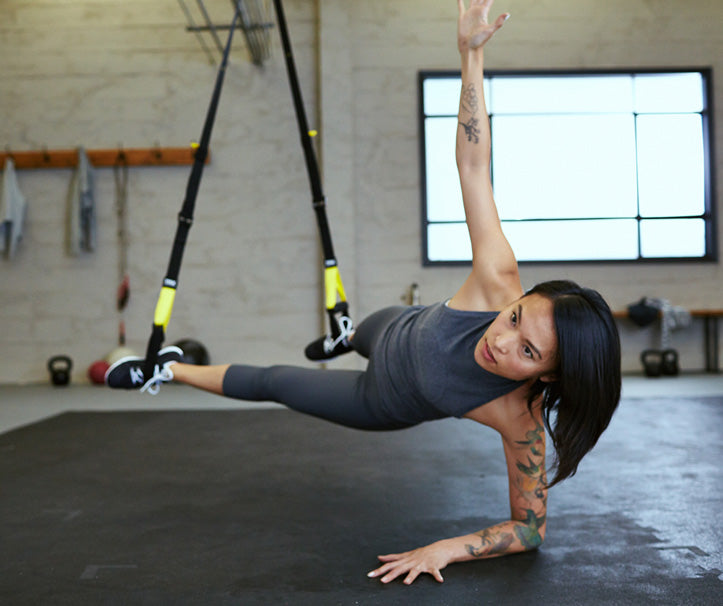
The Principle of Individuality
Transformation Blog Series, Part 6 of 7
“TRX allows you to be “all in” physically and emotionally because you can use it anywhere, anytime for any fitness goal. You are on your own journey, embrace your positive results, take every opportunity you can to celebrate your body’s movement and keep your eyes on your next small victory.”
As mentioned in our introductory blog about how to successfully achieve a body transformation, with the exception of identical twins, no two people have the same genetic characteristics and therefore will not respond to movement, diet and changes in their lifestyle at the same pace or with similar results. Such individual variation between people explains why some individuals show such great improvements after participation in a given program (high responders), whereas other people experience little change after following the same program (low responders). However, don’t allow the fact that you may be a low responder discourage you from ever making changes in your life. The good news is that even small changes can yield big body transforming results. The key is to identify your strengths and weaknesses, set some specific, realistic goals that are measurable and time-based, and then get “all in” with your training plan.
Here’s how to do just that:
Setting Realistic Goals
Any program you embark upon must take into account your individual differences, specific needs and performance abilities. Therefore, you must have realistic goals about your training and make selections that will lend themselves to you meeting these individual needs. One of the obstacles that tend to lead people away from a healthy relationship with exercise is the selection of exercises that aren’t fun, engaging or motivating. Maybe you’re trying to exercise early in the morning, when you are better in the evening. Maybe you’re selecting exercise programs that don’t achieve what you want from your training. Consider the following and see what might be standing in the way of fitting movement into your life:
What time of day are you most successful at sticking with exercise?
What do you like to do?
Do you enjoy workouts in a group or doing it alone?
What are your three favorite body parts and what three would you like to see change?
“It’s how you respond to these challenges that is the deciding factor in whether you achieve your larger goals.”
Once you are able to identify exactly what may be an obstacle, and what you want from your training program, work to figure out how to make positive results happen. Be sure to give yourself credit for even the small steps you take that result in even little changes. Your commitment to your goal of transformation is to be commended and you should always give yourself grace, honor and gratitude for what you are doing to make changes.
Setting Specific Goals
Because training adaptations are specific to the type of training you are performing and to the volume and intensity of the exercises selected, the program you are using must stress the physiological systems that are critical for optimal performance in the given area that you are trying to change. For example, if you desire more strength, you must perform movement in volumes and at intensities that will cause muscular overload, stimulate the need for the muscles to become plastic, meaning they will grow (hypertrophy) as well as adapt to the neural changes associated with improved strength. If you want to improve strength and power, you need to train for strength and power. If you want to lose fat and increase your lean mass, you must train with a metabolic goal in mind. Don’t expect a better cardiorespiratory system if you are training for more strength and neglecting the aerobic component.
The following table is based on the American College of Sports Medicine (ACSM) Guidelines for Increased Strength 1. If strength is a goal for you, this table can guide you in selecting the reps, sets and loads you can apply to your TRX program to achieve strength training goals, with enough flexibility to ensure that your individual needs can be met.
You will notice that the “load” column refers to a prescribed percentage of your 1RM (one repetition maximum). When using your body mass as resistance on the TRX® Suspension Trainer™ the most effective way to manage load is to follow the repetition recommendations in the “volume” column. For example, when training for strength development use a body angle that requires you to reach muscle fatigue in the recommended repetition ranges. Remember to always focus on strict movement standards and do not sacrifice quality for quantity. For more advanced strength athletes using a weight vest is an excellent way to increase intensity once you have maximized body angle.
Get All In
As a 30-year veteran fitness trainer, I have seen many people get really excited about starting a training program, only to find that life gets in the way and interferes with their dedication to their new program. The biggest obstacle for most people is time, or a lack thereof. Being really excited for the first few workouts is expected, but once you miss one, you tend to miss another one and then another. Pretty soon you’ve stopped exercising altogether and you’re “all out.” This feeling of guilt tears at us emotionally and can really decrease motivation, making us feel that we have let ourselves down.
“Remember, success is often measured in millimeters, small victories that deserve to be celebrated and that generate positive momentum towards your larger goals.”
Although the small defeats in trying to make a body transformation are not easy, they are likely going to happen at one point or another. It’s how you respond to these challenges that is the deciding factor in whether you achieve your larger goals. This is one of the major reasons why the TRX Suspension Trainer is one of the best tools for achieving a total body transformation. The flexibility it provides makes it a perfect tool for time-crunched individuals looking for that total body transformation because it can deliver quick, efficient workouts that can be fit into your schedule anywhere, anytime. TRX lets you perform exercises anywhere at any time because it is portable, flexible and customizable. Movement selection can be customized to meet your level, skills and abilities exactly, quickly and efficiently.
Remember, success is often measured in millimeters, small victories that deserve to be celebrated and that generate positive momentum towards your larger goals. 2 more reps, 3% less body fat, 1 millimeter less on your waist, etc. Look for your small victories and avoid allowing a missed workout. You’re running your own race, so someone else’s should not discourage your effort. Your body is unique and responds to exercise thusly. TRX allows you to be “all in” physically and emotionally because you can use it anywhere, anytime for any fitness goal. You are on your own journey, embrace your positive results, take every opportunity you can to celebrate your body’s movement and keep your eyes on your next small victory.
References:
1. Esso, M. 2013. Resistance Training for Health and Fitness. AMerican College of Sports Medicine.
Irene Lewis-McCormick M.S is Adjunct Faculty at Drake University, an SCW Fitness Education (SCW) Certification Master Trainer and the Education Director at Octane Fitness. An Orange Theory Fitness coach, she’s a twice published author (Human Kinetics) holding advisory board positions with Diabetic Living and the National Egg Council. Named Top 3 Group Fitness Instructor 2015 by IDEA Health & Fitness, Irene is a RYKA Ambassador and Subject Matter Expert for ACE. Irene presents education for SCW, ACSM, IDEA and NSCA. She is an SCW, TRX, Tabata Bootcamp, Barre Above, JumpSport and Octane Fitness master trainer. Certifications include SCW, ACSM, NSCA, ACE, AFAA & AEA.
Body Transformation Series, Part 1 of 7 Body Transformation Series, Part 2 of 7
Body Transformation Series, Part 3 of 7
Body Transformation Series, Part 4 of 7
Body Transformation Series, Part 5 of 7
Body Transformation Series, Part 6 of 7
Body Transformation Series, Part 7 of 7
